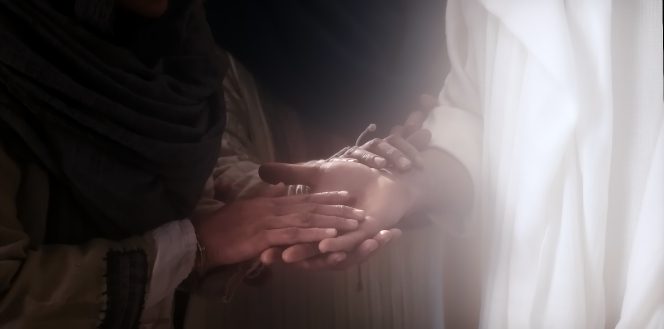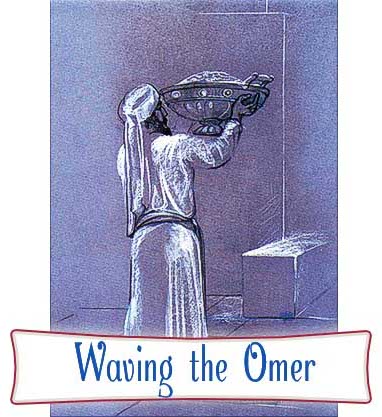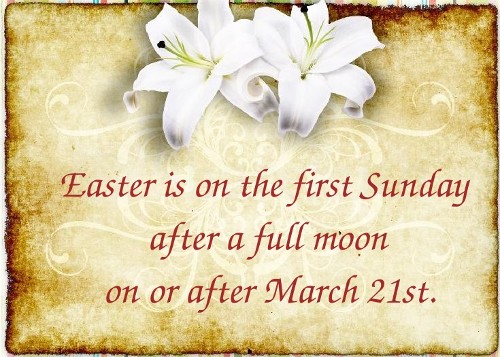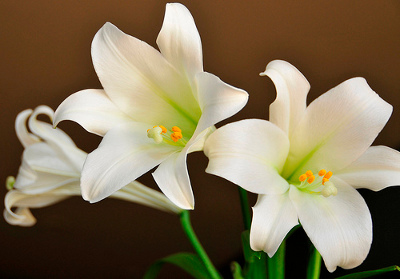leap year (CLICK LINK FOR MORE INFO) that occurs on this year:
John, excellent article. The reason Passover is late this year is because this is a year that contains a leap month in it. Adar I and Adar II. This pushes the Passover out by what appears to be a month. This is the reason that there are 1260 days followed by 1260 + 30 in the second half of the reign of Obama as the A/C this year. Christ comes to Jerusalem on the Wedding Feast of October 2016. This is 1290 days after the midpoint of 3/22/2013 that was preceded by 1260 days since Obama received the Nobel Peace Prize on 9 Oct, 2009. We have our man. We have our year - we have our set-up in the ME and it is game on for Jesus to return this fall on the 50th, 50th Jubilee year of 2017. 50 years after the Temple Mount was returned to the Jews, and 50 years after the Turks relinquished control of the Holy Land in 1917. The end of 2016 (start of 2017 is the year of Messiach, 70 years after the call went forth to make Israel a nation once again. Just as Israel was released from captivity on the 50th, 50th Jubilee after Adam and Eve were expelled from the Garden of Eden, so will modern Israel be released from those who will surround them on the 50th, 50th Jubilee since the captives were released from the 70 years in Babylon.
I copied the content from this link - because I think it is important enough not to lose. ALL of this stuff happening this year has significance:
http://ldsmag.com/this-easter-is-unique-is-all-of-history/
Scripture Study
To sign up for Meridian’s Free Newsletter, please CLICK HERE.This Easter is Unique in All of History
Easter Sunday celebrates what is to most Christians the most important event in all of history: the resurrection of Jesus Christ, the Son of God and Savior of mankind. It is a day to remember and contemplate all that the Savior has done for us, especially giving everyone the gift of resurrection. This article announces that Easter this year, Sun 27 Mar 2016, occurs on holy days on two other sacred calendars which makes it unique in all of history and especially symbolic of both the Savior’s birth and resurrection.
Why does the date of Easter vary?
Why does the date of Easter jump around in the spring so that we always have to look at a calendar to know when it is? How is the date determined? Why isn’t it simply celebrated on the same day every year?
Easter is such an important holy day (holi-day) that it was decided long ago not to celebrate it on the same calendar day every year, but instead to try to celebrate it according to the sacred calendars on which it was known to have occurred, having symbolic significance. Many scholars agree that the day on which Jesus resurrected would have been called Sun 3 Apr AD 33 on our modern (Gregorian) calendar.[1] Suppose we celebrated Easter every year on 3 Apr. That day can fall on any day of the week, so we’d only have Easter on Sunday about once every seven years. So is it important to celebrate Easter on a Sunday?
Sunday
The early Christians felt that celebrating the Resurrection on Sunday was so important that the day of weekly worship was changed from the last day of the week (Saturday) to the first day of the week (Sunday) because that was the day on which all four Gospels agree that the empty tomb was found (Matt. 28:1; Mark 16:2; Luke 24:1; John 20:1). It is important to note that the 7-day weekly cycle has not been interrupted since the time of Christ, so Sunday today indeed corresponds to the Sunday on which the resurrected Christ appeared to his followers.
In other words, early Christians were celebrating the Resurrection every single week by worshiping on Sunday. Was the Resurrection really so important as to merit changing the weekly day of worship to remember it? The best explanation known to me is given in the Epistle of Barnabas, a book believed by the early church fathers to have been written by the apostle Barnabas (Acts 14:14), but which was excluded from the Bible. There it is explained that the world will last for seven thousand years which are symbolized by the seven days of the week. The last thousand, the Millennium, will be a 1,000-year day of rest even as was the weekly sabbath (Saturday) the day of rest. But then he added that in the eighth thousand years the earth would be changed into a new world, so the holy day was changed to the eighth day of the week to honor the resurrection of Christ. Of course the eighth day is the same as the first, so that is his explanation of why the holy day was changed to Sunday.[2]
If early Christians were celebrating the Resurrection every single week, shouldn’t we do likewise? So often we hear in Christian congregations that we are keeping the seventh day holy, but that would be true only if worshiping on Saturday. Surely we should understand, especially when partaking of the sacrament of the Lord’s Supper on Sunday, that we are remembering not only the Savior’s suffering and death but also His resurrection.
So the answer is yes, it was very important to celebrate the Resurrection annually on Easter on a Sunday because that should be done to a lesser extent every Sunday. But which Sunday?
After Passover
The early Christians understood something more about the day of the Resurrection. There was actually a day on the Hebrew calendar that represented the Resurrection, but its meaning was not clear until after the event. During the holy week of Passover which comes every spring on the Hebrew Calendar there is a special ceremony specified in which the priest presents an offering of barley to the Lord. It is called the Waving of the Omer. It represented offering the firstfruits of the ground to the Lord. After the Resurrection, Paul understood that Christ became the firstfruits of the dead (1 Cor. 15:20) and seemed to be clearly relating that ceremony to the day of the Resurrection. This ceremony should not be confused with the Feast of Firstfuits, also known as the Feast of Weeks or Pentecost, which occurred exactly seven weeks after this offering. That feast was celebrating the firstfruits of wheat, not barley.
At the time of Christ there was a dispute about the correct day on which to offer the firstfruits. The law of Moses specified that it be offered during Passover week on the morning following the “sabbath” (Lev. 23:10-11). The Sadducees understood the word “sabbath” to mean Saturday, the weekly sabbath, and so they offered the firstfruits on Sunday morning during Passover week. The Pharisees, on the other (left) hand, understood “sabbath” to mean the actual day of Passover which was always a holy day of rest no matter what day of the week it fell on. Because Passover week (also called the Feast of Unleavened Bread) began on 15 Nisan (the first month, in the spring), they always made the offering on 16 Nisan. Modern Hebrews have followed the Pharisaic tradition. All of the evidence discovered in my work supports the Sadducees’ interpretation: the correct day for the Waving of the Omer was indeed always on the Sunday after Passover.
In the month of the Resurrection, both Pharisees and Sadducees agreed on the day of the Waving of the Omer because the Sunday after Passover fell on 16 Nisan. Jesus was crucified on Fri 14 Nisan (1 Apr), the day for sacrificing the Passover lamb in the afternoon. He was in the heart of the earth on Sat 15 Nisan (Passover, 2 Apr) and resurrected before dawn on Sun 16 Nisan (3 Apr).
Thus, it was known to the early Christians that the Resurrection had actually been foreshadowed in the law of Moses to occur on the morning of the Waving of the Omer of the firstfruits of the ground. It is not clear how much of this knowledge had been lost by AD 325 at the Council of Nicea when the decision was made about when to celebrate Easter. That council wanted to break all ties to the Jews, so they did not want to even mention Passover in their decision about Easter. Moreover, they wanted to ensure that Easter would never fall on the Jewish Passover so that they could have their own distinct holiday.
It is believed that the way the lunar month of Nisan was determined at that time was such that Passover (15 Nisan) fell on or after the full moon of spring. Thus, to mimic this idea, the council chose to celebrate Easter on the Sunday after the full moon on or after the spring equinox (assumed to be 21 Mar). We still follow that tradition, so Easter is on the first Sunday after a full moon on or after 21 Mar.Thus, the earliest possible date of Easter is Sun 22 Mar, which can occur if the full moon is on Sat 21 Mar.
Whether the council knew it or not, their formula agrees with the day for Easter (Waving of the Omer) on the Hebrew Calendar in almost every case. All of this explanation was really to show that we are celebrating Easter on the right day! In fact, it is more correct even than the traditional Hebrew Calendar, which can be off by as much as a month as it is this very year. Easter this year falls on Sun 27 Mar, which is the first Sunday after the full moon on 23 Mar. But the Hebrew Passover this year falls on Sat 23 Apr, a full month late. Is was such errors that led to the Perpetual Hebrew Calendar being developed in my work to correct them.
In my early articles, the Sunday after Passover on the Hebrew calendar was referred to as the Waving of the Omer. Later, when it became clear that that day on the (Perpetual) Hebrew Calendar is really the correct Hebrew day to celebrate the Resurrection, my articles began referring to that day as Easter on the Hebrew Calendar. It just seems simpler, more accurate, and needs less explanation.
A Unique Easter
After that lengthy introduction, let us now turn to what makes this coming Easter so special. There are currently fourteen sacred calendars known to me. Each has a holy day for the celebration of the Resurrection. Most of the holy days are actually associated with steps of life, so there is a holy day for conception, birth, death, etc.[3] One of the most important of those days represents resurrection as a day in the life of all mankind, just as birth and death.
One of the most important of all sacred calendars is the Sacred Round of 260 days. It forms the basis of all of the planetary calendars known to me so far. The day representing resurrection on that calendar is the day 1 Reed. Actually, there are two adjacent days that appear to represent the entire process. The day preceding 1 Reed is 13 Grass. The picture for Grass is that of grass growing out of a skull. It is hard to imagine a better illustration of new life coming from death. Reed is either illustrated by a reed or by an arrow made from a stiff straight reed. Reed appears to symbolize the completed process. The day on the Sacred round begins at 6 a.m. The “perfect” calendar days for a resurrection before dawn would be to have it begin on 13 Grass and then celebrated after sunrise on 1 Reed.
How often does Easter Sunday occur on the day 1 Reed? Before answering that, let us note that it did not even happen at the resurrection of the Savior. His birth and resurrection dates had reversed symbolism. The figure representing birth on the Sacred Round is Temple because one receives the temple of the body at birth. It turns out the Savior was born on the day 1 Reed and resurrected before dawn on 13 Temple. So those symbols were reversed: He was born on the day for resurrection and resurrected on the day for birth.
How often does Easter Sunday fall on the day 1 Reed? We can easily calculate how often we might expect that to occur. There is one Easter Sunday every year and it can fall on any one of the 260 days of the Sacred Round. Thus, we’d expect Easter Sunday to coincide with 1 Reed about once every 260 years, or about twice in 500 years.
Checking every year in the 500 years from 1750 to 2250 it is found that exactly two Easters occur on 1 Reed in that interval, exactly as expected by our probability calculation. But it is important to remember that sacred calendars are not random, but very carefully ordered by a supreme Creator. Thus, the two days on which this alignment occurs may be important.
The two dates in 500 years with Easter Sunday on 1 Reed are: Sun 15 Apr 2001 and Sun 27 Mar 2016.
The first of those dates was noticed beforehand by this author and an Easter morning sunrise service was held for a hundred people or so to celebrate it. At that time my first articles on the Venus Calendar[4] and also on the Sacred Round[5] were published. My feeling at the time was that it was some sort of opening day of the Millennium on the Sacred Round and/or Venus Calendar. It was also the beginning of my publishing the importance of both the Venus Calendar and of the Sacred Round, both of which are very important to Native Americans. Both of those calendars are now both much better understood and are beginning to be more appreciated. Moreover, the meeting was held in Lehi, Utah, which seemed significant as representing the promised land of Lehi. Click here to see the program and a list of attendees.
It probably also should be mentioned that at the time of that event it was not known that Reed symbolized the Resurrection. It was important only as being the birthday of the Savior. So with that new understanding the date is even more significant.
There is, however, even more importance attached to both of those dates.
The Venus Calendar is closely associated with the Sacred Round, insomuch that all of the holy days on the Venus Calendar occur either on day 1 or 13 on the Sacred Round. There are only nine holy days on the Venus Calendar which fall on a day “1”, and only one of them represents resurrection. That one day in the entire 585-day Venus Cycle is called 1 Resurrection. So now we can ask, how often does Easter fall both on 1 Reed and also on 1 Resurrection?
Again the expected number of such Easters is easy to estimate. There is one Easter every year, which can fall on any day on the Venus Calendar. Thus, once every 585 years we can expect Easter to occur on 1 Resurrection. Because that day can fall on any of 20 different pictures, only one Easter in 20 of those would fall on 1 Reed. So we expect only 1 in 585 x 20 = 11,700 Easters to occur both on 1 Reed and also on 1 Resurrection! With odds like that we would not be surprised if there were not even one such Easter in the 7,000 years after Adam (which is called “all of history” in this article)!
After doing an exhaustive search of each of those 7,000 years, it turned out there is exactly one such Easter. It was the first one found above, occurring on Sun 15 Apr 2001! That was the only one in all of history. To have it occur so near the beginning of the seventh millennium since Adam is what made it worth holding a gathering to celebrate.
Only this morning did it occur to me to check for another alignment. On the Venus Calendar Jesus was born on the day 1 Lord, symbolic of becoming one with God. It is the last step in the cycle of life represented on the sacred calendars. So now let us ask how often does Easter fall on 1 Reed and also on 1 Lord, both of which days coincided with the Savior’s birthday on the evening preceding Thu 6 Apr 1 BC.
The expected number of such Easters is again one in 11,700 years for the same reasons as above noted. Doing the exhaustive search again resulted in one Easter during the 7,000 years after Adam. That one Easter in all of history is this coming Easter Sunday: 27 Mar 2016!
Easter is often the day each year that is holy on the most number of sacred calendars because the sacred calendars are set up to align on holy days as much as possible, especially on Easter. This Easter is also a holy day on four other sacred calendars: 1 Birth (Mercury and Uniform Mercury), 1 Maaziah (Priest, if before noon), and 1 Winter (Uniform Enoch). Thus, on the two Mercury calendars this Easter also falls on 1 Birth, the one day in their 117-day cycles which represents birth. Thus, this Easter is extremely symbolic of both the birth and resurrection of Jesus Christ.
Conclusion
This coming Easter is an amazingly unique Easter in all of history. It occurs on 1 Reed on the Sacred Round, which both symbolizes the Resurrection and was also the day on which Jesus Christ was born. Moreover, the day is also 1 Lord on the Venus Calendar which was also the Savior’s birthday on that calendar. Those days are so rare that not even one Easter that coincides with both 1 Reed and 1 Lord is expected to occur in the 7,000 years since Adam. Indeed, this Easter is the only such occurrence in that interval. Those wishing to have a special home celebration might wish to use a short suggested program found here. Hopefully this announcement is being made in time to have an extra special Easter this year to celebrate both the birth and resurrection of Jesus Christ.
Notes
- Most historians use the Julian Calendar which was (supposed to be) in use at the time. On that calendar the date was called Sun 5 Apr 33. The other widely accepted date is in AD 30 but is based more on beliefs about the birth date of Christ than it is on the Biblical account. For details, see my article “The Restoration of Priesthood Keys on Easter 1836, Part 1:Dating the First Easter,” Ensign 15, No. 6 (June, 1985), pp. 59-68.
- After noting that the former sabbath was symbolic of the seventh 1,000-year “day” since the Creation, during which all would rest, Barnabas explains that the next day would be “the eighth day, that is, the beginning of the other world. For which cause we observe the eighth day with gladness, in which Jesus rose from the dead” (Barnabas 13:3-5, 9-10). (See Rutherford H. Platt, Jr., The Lost Books of the Bible and the Forgotten Books of Eden, New York: World Publishing, 1963, p. 161.)
- Pratt, John P., “Celebrating Life on Twenty Holy Days” (18 Feb 2014). This article correlates 20 holy days on various sacred calendars to each other.
- Pratt, John P., “Venus Resurrects This Easter Sunday” Meridian Magazine (27 Feb 2001). This is an introductory article to the Venus Calendar. An updated and more complete description is given in “Venus Calendar Patterns Testify of Scriptures” (26 April 2013).
- Pratt, John P., “A Native American Easter” Meridian Magazine (28 Mar 2001). This is an introductory article to the Sacred Round. A more general introduction is at “The Sacred Round“.









It's foolish to think Christ's second coming will be in October. The Relief Mine has not come in yet, which takes place prior to the Lord's church being cleansed and its current leaders replace.
ReplyDeleteYou need to make some adjustments to your timeline.
It's even more foolish to think we rely on a mortal man's visions about a mine than what's written in the scriptures, especially in the Book of Revelation that point to the Feasts if you know what to look for. Jesus Christ will fulfill every one of them on those Fall Feasts for His return.
ReplyDeleteAnd EASTER.....IS A PAGAN HOLIDAY PEOPLE! Get over it. Stop celebrating it! Look up it's pagan origins. I'm so sick of this Easter and Christmas crapola.
Friday evening to Saturday evening IS THE SEVENTH DAY. The TRUE Sabbath to remember the Creation and God's power and goodness as THE Creator. Worshipping any day of the week is FINE but the SABBATH has NEVER changed since it was set apart BY GOD. EVERY SEVENTH DAY! AND EVERY NEW MOON is a special SABBATH! Isaiah 66:23.
Christmas and Easter....DROP THEM. Give them up. Stop offending God! Celebrate the true Feasts we've been commanded to observe. The Law has NEVER been done away with. Fulfilled, yes. Done away with, NO. Your broken heart and contrite spirit are what's to be put on the altar so that God can send fire from Heaven to burn the natural man out of you on that altar.
WAKE UP! Seek to KNOW God and Jesus Christ whom God has sent as one man speaketh with another.
AND if we're relying on visions, Spencer said a major earthquake happens in Utah in the Fall and then more follow. And the Second Coming hasn't happened yet according to his experience. It's still years away according to Spencer as all the signs/wonders/war/plagues/gathering of elect occur. Being spiritually prepared is more vital than ANYTHING. Speculating consumes so much vitality and can wear out the best of the saints. "Thou art in control oh Lord and all flesh is in thine hands. I will watch and wait patiently for you to come and get me. And I will not obcess over what the enemy of my soul is up to because I have no control over that anyway. I only have control over myself and how I conduct myself before Thee to be found worthy to abide the day. Please keep my feet on the path that leads home to Thee. Thy Word is a lamp unto my feet." In the name of Jesus Christ, amen.
This life is not "Mystery Theater" as some are making it out to be. It is a time to prepare to MEET GOD, NOW, IN THE FLESH before HE officially comes back.